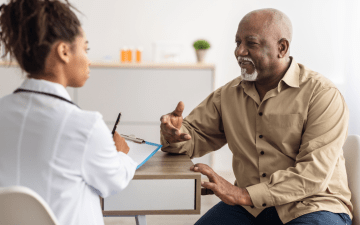Endometriosis 101: What You Need to Know

Learn about the common condition affecting 10% of women aged 15-44, and empower yourself with knowledge for early detection and management.
Endometrial tissue plays an important role in the reproductive system. It lines the inside of the uterus and provides a place for a fertilized egg to implant and develop. During menstruation, it sheds from the uterus wall and normally departs the body via the cervix and vagina. However, this clean-up process can go awry, and the endometrial tissue may get into areas where it doesn’t belong. That’s when it can cause big problems — a condition called endometriosis.
Endometrial tissue that’s gone astray can attach to ovaries, fallopian tubes, the outside of the uterus, and other pelvic organs. It still swells and bleeds every month, like it does inside the uterus. When it comes time to shed, it has no easy way to exit the body. It builds up and raises havoc.
Areas affected by endometriosis can become inflamed and scar tissue or cysts may form. Bands of scar tissue called adhesions may fuse organs together, resulting in discomfort and pain.
It’s estimated about 10 percent of women between ages 15 and 44 have endometriosis. Women in their 30s and 40s are more likely to get it. In this article, we’ll discuss how to recognize if you or a loved one has endometriosis. We’ll also talk about available treatments and give you some strategies for lowering the risk of it developing.
Symptoms of Endometriosis
People with endometriosis may experience these symptoms:
- Pain. Menstrual periods can be extremely painful. There can be pain in the abdomen or back during periods or in between. Endometriosis can cause pain during sex, bowel movements, or urination.
- Excessive bleeding. Menstrual periods may have heavy bleeding, or there may be bleeding between menstrual periods.
- Infertility. Growths may block fallopian tubes or affect the ovaries, making it difficult to get pregnant.
- Digestive problems like diarrhea, constipation, bloating, or nausea.
It’s important to note that not all people with endometriosis experience symptoms. Sometimes people don’t know they have it until it’s discovered during a procedure or an investigation into reasons for infertility.
What Causes Endometriosis?
The exact cause of endometriosis is not known, but researchers have identified several possible reasons:
- Retrograde menstrual flow. Instead of exiting the body normally every month, some endometrial tissue or menstrual blood containing endometrial cells can flow backward, getting into the fallopian tubes and other areas of the abdomen.
- Genetics. Endometriosis tends to run in families, so inherited genes may play a role.
- Immune system disorders. In some people, their immune system may not destroy the endometrial tissue that’s growing outside the uterus.
- Hormones. Estrogen is a hormone that may enable endometriosis to flourish.
- Abdominal surgery. Procedures such as a Cesarean section may have allowed endometrial tissue to escape the uterus.
Diagnosis and Treatment
To help determine if you have endometriosis, your doctor may do several things:
- Pelvic exam to feel for cysts or irregular growths
- Ultrasound imaging to get a view of the reproductive organs
- Magnetic resonance imaging (MRI) to get more detailed views of organs and possible growths
A pelvic exam and ultrasound imaging won’t confirm that endometriosis is present. To be certain, your doctor may want to do a laparoscopy — a surgical procedure that involves making a small incision in the abdomen and inserting a scope to locate and view endometriosis growths. During the laparoscopy, a tissue sample may be taken to be examined later under a microscope. This biopsy is the only way to know for sure if you have endometriosis.
If you are diagnosed with endometriosis, your doctor will discuss treatment options with you. Those may include taking medicine and having surgery.
Hormone therapies can suppress endometriosis and its symptoms. Those may include:
- Birth control, such as pills taken orally, patches, vaginal rings, shots, implants, or intrauterine devices (IUDs).
- Gonadotropin-releasing hormone agonist, a drug that temporarily turns off the production of estrogen and progesterone.
- Danazol, a drug that decreases hormones made by the ovaries.
Hormonal treatment is aimed at slowing the growth of endometrial tissue, stopping bleeding, and controlling pain. Your doctor may also recommend taking pain relief medications.
Surgery may be recommended for patients with severe symptoms, or who don’t get relief with medicines. Laparoscopy is the type of surgery used most often. Tiny surgical tools that are part of the laparoscope enable the surgeon to remove any tissues they find.
There is a chance endometriosis may return even after having surgery, because not all the endometrial tissue was found or removed. Taking hormonal treatments after surgery may help delay its reappearance.
In some cases, a hysterectomy may be recommended to remove the uterus and stop the menstrual cycle.
What You Can Do
You can reduce the chances of developing endometriosis by taking these steps:
- Lower your estrogen level. Estrogen is the hormone that thickens endometrial tissue during the menstrual cycle. Lowering the estrogen level through hormonal birth control can slow growth of endometrial tissue that is outside the uterus, as well.
- Exercise regularly. By getting plenty of exercise and lowering your body fat, it can decrease the amount of estrogen circulating in your body.
- Reduce alcohol consumption. Drinking alcohol increases estrogen levels. Be aware of your alcohol intake and set personal limits.
- Limit caffeine. Consuming drinks with caffeine can raise estrogen levels, so don’t consume more than one caffeinated drink per day (including soda and green tea).
Early Detection is Important
Endometriosis is a chronic condition that left untreated can have serious impacts on your health. While there’s no cure, it can be successfully managed. Early detection and treatment are important to slow its progress and reduce the long-term symptoms.
If you are having unusually painful periods or other symptoms that could be from endometriosis, we encourage you to talk to your doctor about it. If you need to find a gynecologist, please use our online Find a Doctor tool.



